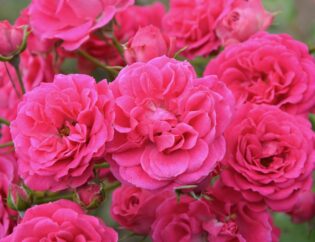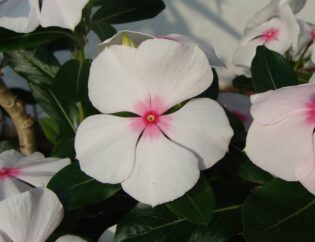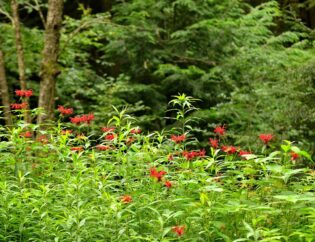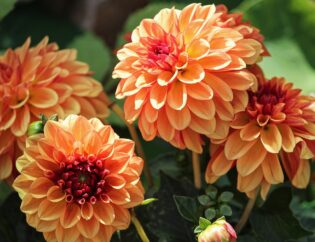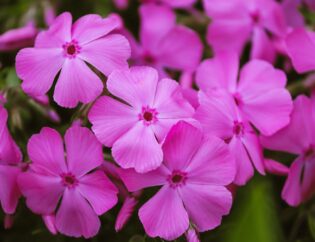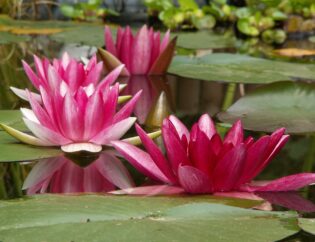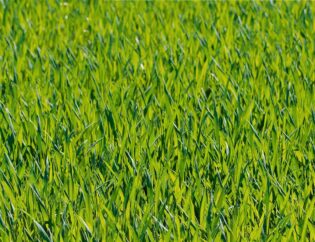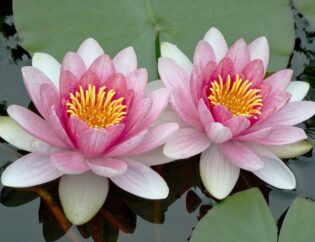
The perlite vs. vermiculite decision is a confusing one for beginning gardeners. The truth is that the two substances are difficult to compare. They have different properties and thus gardeners should use them for different purposes.
Which one is best for Atlanta gardeners to use? To answer that question, let’s find out what each product is and what gardeners should use it for.
What Is Perlite?
Perlite is like glass popcorn. The name comes from the French for “pearl” which makes the substance sound rather appealing.
Manufacturers make it from the volcanic glass that forms from rapidly cooling lava. Then they crush and heat the glass to an intense temperature between 1,800 and 3,200 degrees Fahrenheit.
Under this heat, the steam trapped inside the glass causes it to puff out, like popcorn. Each piece can end up 4 to 20 times its original size!
The resulting light, porous product is great for improving drainage in heavy, compacted soil and retains a moderate amount of water.
- Best for aeration and improving oxygen access to the plant’s roots
- Makes potted plants less heavy
- Allows excess water to drain easily from the soil
- Helps avoid boggy soil that causes rot and mold
What Is Vermiculite?
This substance is a hydrous phyllosilicate mineral that is mined. Though vermiculite has many industrial and commercial uses, home gardeners know it as a soil conditioner. It aids in the absorption of certain minerals that plants need and helps increase moisture retention.
Vermiculite is a less appealing name that comes from the Latin for “breeding worms.” It gets this name because when manufacturers heat the flakey clay to about 570 degrees Fahrenheit, it opens into little tan strands that kind of look like worms.
The resulting spongy substance holds an impressive 16 times its weight in water. This makes potted plants heavier, but it also means the soil stays super moist. This is perfect for plants that like a lot of water or for people who forget to water their potted plants often.
- Retains moisture in the soil
- Adds nutrients to the soil
- Helps to loosen compacted soil
- Useful when germinating seeds
What Are the Biggest Differences Between Them?
The main difference to consider when comparing perlite vs. vermiculite is moisture retention.
Perlite helps excess moisture drain away making it perfect for use with plants that need to dry out between waterings. This includes cacti and other drought-resistant plants that can rot because of too much water.
On the other hand, vermiculite absorbs and retains water easily. As the soil dries out around it, the vermiculite releases water, keeping the soil moist for a long period of time. This is perfect for water-loving plants like ferns or to maintain moisture in extreme heat.
Perlite also helps to aerate the soil and allows oxygen to reach the plant’s roots. Water-logged vermiculite can break up clay soil but isn’t the best for actual aeration.
What’s the Deal With Drainage?
Water is life for plants. Without water, all plants will eventually die. However, there can also be too much of this good thing.
Some plants, particularly drought-resistant ones, are very susceptible to rot, fungus, and even mold in the presence of too much water.
Furthermore, a pool of water in a plant container cuts off the root system’s oxygen supply and irreversibly decays the roots. Though plants use carbon dioxide and sunlight to make food, they need access to oxygen to actually convert it into usable energy.
For this reason, proper drainage for potted plants and garden beds is critical. For planters and containers, that means using a balanced loam soil that drains freely while retaining some moisture. (Learn more about fixing drainage problems here.)
What Is Aeration?
We often think of plants taking in carbon dioxide and producing oxygen. However, plants also need oxygen to survive. Without it, they can’t utilize glucose to produce the energy they need for survival.
Aerating the soil is the process of punching air holes in the soil and breaking up compacted clumps. This allows air better access to the roots. Aeration is particularly helpful for lawns that get compacted by foot traffic.
Can You Substitute Vermiculite for Perlite?
When deciding perlite vs. vermiculite, many homeowners wonder if one can be substituted for the other. After all, they are both soil conditioners and the names sound similar enough.
However, the short answer is no. Perlite facilitates drainage while vermiculite increases water retention. Basically, they have opposite roles in the garden.
What Plants Need Perlite?
When should homeowners choose perlite over vermiculite? When they have plants that do well in drier environments or need to improve overall drainage.
Plants that need well-draining soil include cacti and succulents. These plants are perfectly happy living in dry conditions and rot quickly if there is too much moisture.
Additionally, many houseplants do well with additional drainage. A house is not subject to the wind and direct sun that would normally dry out the dirt. As a result, overwatering is the most common problem with houseplants. Adding a little extra perlite helps with this problem.
What Are Some Other Common Soil Additives?
Of course, the choice for soil additives doesn’t end with perlite vs. vermiculite. There are a few other substances gardeners can use depending on their needs.
Pumice
Pumice is an igneous rock that starts as molten or partially molten material. It is extremely effective at loosening compacted clay soils, reducing water runoff, and improving nutrient retention.
Sand
Sand is an effective soil additive in clay soils to keep it from clumping. It also improves aeration and drainage. Plants with fine, delicate roots particularly appreciate this addition to the soil.
Peat Moss/Sphagnum Moss
Peat moss is a dead fibrous material made up of moss and other organic material as it decomposes in peat bogs. It is a superstar at holding moisture and nutrients in the soil. However, it is also quite acidic and is not suitable for plants that need a more alkaline soil.
Coco Coir
Coco coir is made up of the leftover fibers of a coconut. It adds organic matter to the soil, is naturally weed-free, and degrades very slowly over time. It is fantastic at holding moisture and helping to retain nutrients in the soil.
Is Perlite Made From Styrofoam?
No. Perlite kind of looks like Styrofoam but it has nothing to do with it. As mentioned, it is made from volcanic glass that puffs up when heated, like popcorn.
Furthermore, even though it is a manufactured substance, the National Organic Standards Board approves it for use in organic food production. This is great news for homeowners who want to stick with organic gardening.
Have a Project in Mind?
Our landscaping professionals at Atlanta Turf & Tree have 35 years of combined experience turning Atlanta-area yards into works of living, lasting art. Contact our landscaping services experts to get going on your next project!
